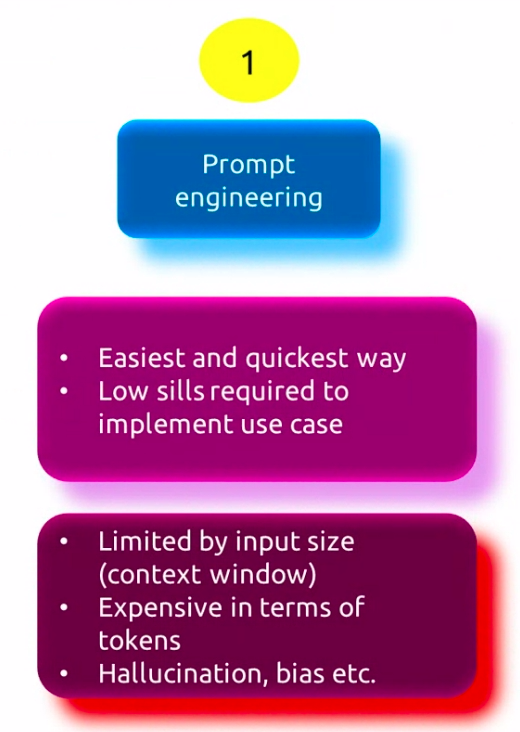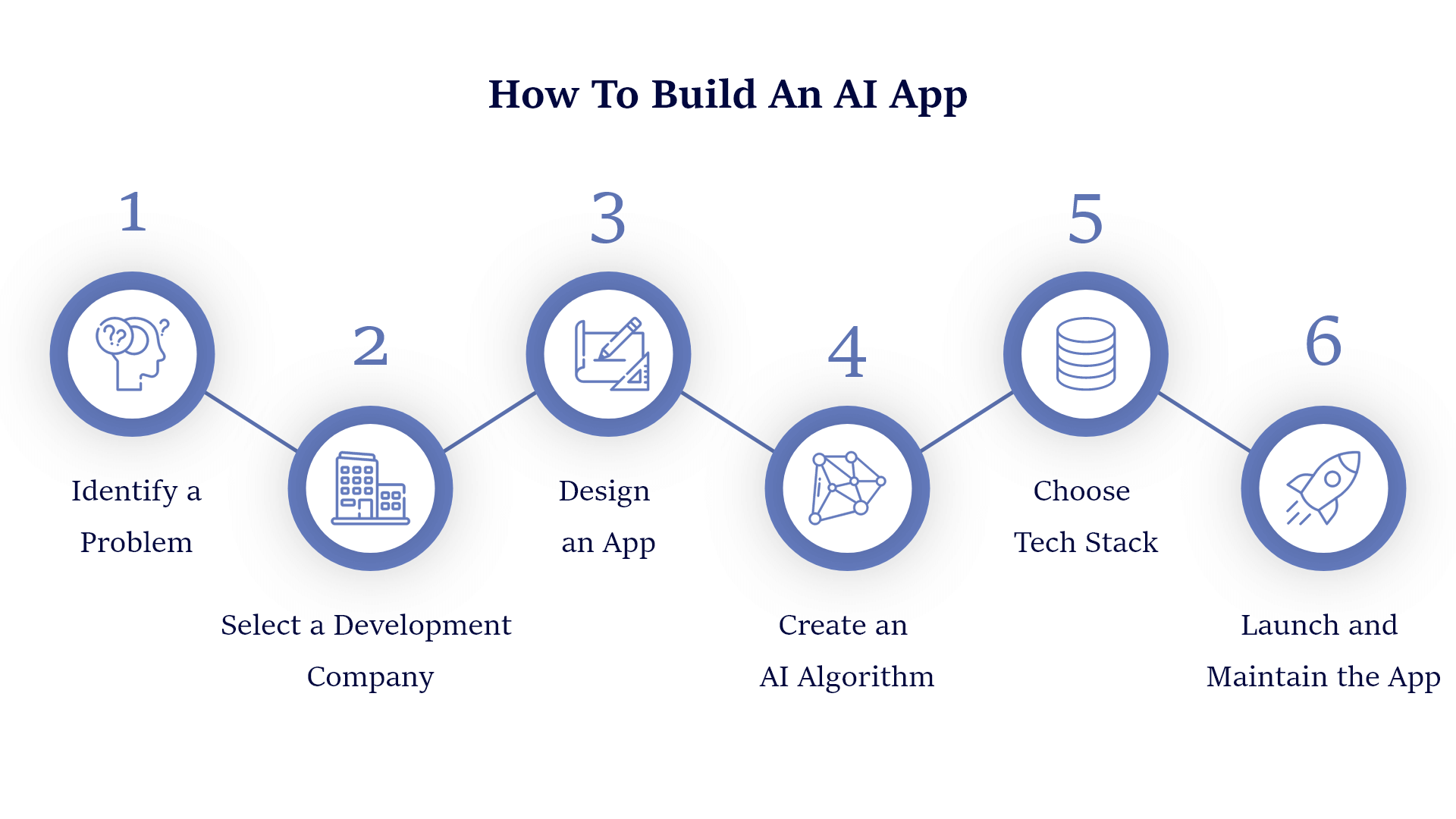Introduction
With the potential to add $2.6 trillion to $4.4 trillion annually to the global economy, Generative AI has made its way into almost every industry. It is revolutionizing the way businesses approach problem-solving, inventiveness, and innovation. Consequently, companies are on a constant lookout for candidates with Generative AI skills that could help them stay at the forefront of technological advancements.
Do you astonish your colleagues, mentors, and employers with your innovative capabilities? Is playing with AI to mold its application towards a desired task a passion for you? If your answer is a yes to all these questions, now is the time to enter the field with honed skills.
With expertise in Generative AI, you will be a captain navigating a ship through uncharted water. Wondering how? Welcome! Let us guide you through the journey.

Table of contents
Growth in the Generative AI Sector
The exceptional abilities of Generative AI to ease and perform a myriad of tasks have brought a revolution. It is evident by the large number of companies deploying this specialized field of AI in content creation, Natural Language Processing such as developing chatbots for customer support and interaction, image synthesis, complex problem solving, data augmentation, creativity enhancement, personalization, research, and more.
It has generated loads of employment opportunities for skilled individuals. According to the Global Workforce of the Future Report 2023, around 70% of workers are currently working on Generative AI at their workplace. Out of these, around half are without expertise in the domain. Further, a percentage as large as 57% looks forward to training to carry out their work efficiently.
From an employer’s perspective, Generative AI will drive about 7% of global GDP (as per Goldman Sachs). It is capable of lifting the productivity growth by 1.5% within a period of 10 years.
Moreover, employers believe the era of new jobs requires expertise in Generative AI to tackle innovative challenges with a creative bent of mind. Regardless of your field of expertise, the presence of skills to keep up with the new requirements to deliver company growth will make you a right fit in the domain.
Driving your transition to Generative AI, our course GenAI program will assist you. But how? Instead of believing mere words, we will teach you different skills that will contribute to your development, which are taught in our course along with more in-depth knowledge.
Also Read: Top 7 Generative AI Courses to Do in 2024
Top 6 Essential Generative AI Skills
Lets look at the top Generative AI skills that you must have to make a career in this field:
Prompt Engineering
Generative AI is a powerful tool, but like any tool, it needs the right instruction to work effectively. That’s where prompt engineering comes in. Let’s look at the reasons to be good at Prompt Engineering, if you want to make a career in Generative AI:

Unlocking Potential
Generative AI models are complex, and their outputs can vary greatly. Prompt engineering acts as the bridge, allowing you to craft instructions that guide the AI towards the desired outcome, whether it’s creative text formats, specific artistic styles, or informative summaries of data.
Precision and Control
Without proper prompts, generative AI can produce irrelevant or inaccurate results. Prompt engineering empowers you to fine-tune your requests, ensuring the AI delivers exactly what you need.
Efficiency and Clarity
Effective prompts can significantly reduce the trial-and-error process. By clearly communicating your intent, you get the results you want in fewer attempts, saving time and resources.
Addressing Bias
Generative AI models are trained on massive datasets, which can sometimes contain biases. Prompt engineering allows you to mitigate these biases by steering the AI away from unwanted outputs and prompting for fair and balanced results.
Read this blog to know all about Prompt Engineering!
Fine-tuning
Fine-tuning is a crucial skill in generative AI for several reasons:

Specialization
Generative pre-trained models are powerful but general-purpose. Fine-tuning allows you to specialize a model for a particular task or domain. Imagine a pre-trained model as a talented artist who can paint various things. Fine-tuning is like giving them specific instructions and examples on a particular style, like portraiture, to improve their results in that area.
Improved Performance
Fine-tuning can significantly enhance the accuracy and quality of the outputs generated by a model. By focusing the model on a specific domain, it learns the intricacies and nuances of that area, leading to more relevant and impactful results.
Reduced Training Time
Training a generative AI model from scratch can be extremely time-consuming and resource-intensive. Fine-tuning leverages the pre-trained knowledge of a large model and tailors it for your specific needs. This significantly reduces the training time required to achieve good results.
Adaptability
The field of generative AI is constantly evolving. Fine-tuning empowers you to adapt existing models to new tasks and challenges as they emerge. This agility is essential for staying ahead of the curve in this rapidly developing field.
Analogy in Finetuning
Imagine you’re building a race car. You can purchase a powerful engine block (the pre-trained model), but to win races, you’ll need to fine-tune it with specialized parts (fine-tuning process) like a high-performance transmission and aerodynamic bodywork. This customization allows the engine to perform at its peak for the specific demands of racing.
In generative AI, fine-tuning is the customization that unlocks the true potential of a pre-trained model for your specific needs.
Also Read: Harnessing NLP Superpowers: A Step-by-Step Hugging Face Fine Tuning Tutorial
RAG Building
RAG building, which stands for Retrieval-Augmented Generation, is a growing skillset important for several reasons in the world of Generative AI:

Power Up Your AI with Real-World Info
Imagine your generative AI is a writer with a vivid imagination, but sometimes they need some factual grounding. RAG building bridges the gap by allowing you to integrate real-world information retrieval into the generation process. This ensures your AI’s creations are not just fantastical, but also grounded in reality.
Boost Accuracy and Relevance
Without RAG building, AI-generated content can stray off track. By incorporating relevant information retrieval, you steer your AI towards creating more accurate and on-point outputs. Think of it like giving your writer access to a giant library for research – their stories will be all the richer for it!
More Creative Freedom
RAG building can open doors to new creative possibilities. By combining factual retrieval with imaginative generation, you can create unique content formats like poems based on historical events or fictional news articles. It’s like giving your writer a box of historical tidbits and fantastical elements to play with, letting their creativity soar!
Efficiency and Personalization
RAG building can streamline the generation process. By providing relevant information upfront, you can guide the AI in the right direction, reducing the need for multiple attempts and edits. It’s like giving your writer a clear brief instead of them having to guess what you want – faster results and content tailored to your needs!
Also Read: How to Build a RAG Pipeline With the LLama Index?
LLMOps
LLMOps, short for Large Language Model Operations, is the practice of managing and maintaining large language models (LLMs) in a production setting. It’s essentially the pit crew for your AI race car, ensuring it runs smoothly and delivers top performance in the generative AI world. Let’s look at the importance of LLMOps as a Generative AI skill:

Keeping Your AI Running Smoothly
LLMOps equips you with the skills to monitor, maintain, and troubleshoot LLMs. You can identify issues like biases in outputs, performance bottlenecks, or data errors, and take corrective actions to keep your AI running optimally. Imagine your LLM is a complex race car – LLMOps makes sure it’s always tuned-up and avoids breakdowns.
Optimizing Performance
LLMOps helps you fine-tune your LLM for peak efficiency and accuracy. You can analyze resource usage, identify areas for improvement, and adjust configurations to ensure the LLM is using its power effectively. It’s like tweaking the engine of your race car to shave off milliseconds from lap times.
Data Management
LLMs are data-hungry beasts. LLMOps helps you manage and optimize data pipelines. You can ensure the LLM is trained with high-quality, relevant data, avoiding inefficiencies and wasted resources. It’s like making sure your pit crew efficiently fuels the race car, not spilling a drop!
Bias Detection and Mitigation
LLMs can inherit biases from the data they’re trained on. LLMOps equips you with the tools to detect and mitigate these biases, ensuring your AI outputs are fair and ethical. It’s like making sure your race car runs clean, without any unfair advantages in the competition.
Scalability and Cost Management
As your use of LLMs grows, LLMOps helps you scale your operations efficiently. You can manage costs, optimize resource allocation, and ensure your AI grows smoothly without breaking the bank. It’s like expanding your pit crew to handle a multi-car team, all while keeping an eye on the budget!
Master the complex concepts of LLMOps with our Generative AI Pinnacle program!
Quantization
In Generative AI, quantization is a technique for streamlining powerful generative models to make them more efficient and accessible. Imagine you have a giant, powerful machine that can create amazing works of art (the generative model), but it’s too bulky and expensive to use everywhere (large file size and high processing power requirements). Quantization is like taking that machine and making a more compact, efficient version that can still produce beautiful results.

Let’s look at the importance of Quantization as a Generative AI Skill:
Quantization reduces the size of a generative AI model by converting its internal calculations from complex, high-precision numbers to simpler, lower-precision ones. Think of it like downsizing the bulky machine into a more portable version.
Faster on the Draw
By using simpler calculations, quantized models run faster on devices with less processing power. This allows you to deploy generative AI on mobile phones, laptops, and even internet-connected devices at the edge of the network, making them more accessible for real-time use. Imagine the art machine being able to work on a smaller table or even out in the field, not just in a giant factory.
Powering Up Efficiency
Reduced model size and faster processing lead to lower power consumption. This is crucial for battery-powered devices and for large-scale deployments where energy efficiency is a major concern. Imagine the art machine needing less electricity to run, saving on costs and being more environmentally friendly.
Opening Doors to New Applications
By making generative AI models smaller and faster, quantization opens doors to new and exciting applications. Imagine using a portable art machine to create custom designs on the fly, generate images for social media posts in real-time, or even personalize video game characters on your phone.
However, there’s a Trade-off
- Balancing Quality and Efficiency: Quantization can sometimes lead to a slight decrease in the quality of the generated outputs. The key is to find the right balance between efficiency and accuracy for your specific application. Imagine the compact art machine might not be able to create works of art with quite the same level of detail as the original machine, but it can still produce impressive results.
Want to become an expert of Quantization? Explore our Generative AI Pinnacle Program today!
AI App Building
AI App Building in Generative AI is the process of taking powerful generative models and turning them into user-friendly applications. It’s like taking the complex engine of a race car and designing a car around it, making that power accessible and usable for everyday people.

Why AI App Building is an essential Generative AI Skill?
Bridging the Gap
Generative AI models are often complex and require technical expertise to use. AI App Building allows you to bridge that gap by creating interfaces that make these models accessible to a wider audience. Imagine having a powerful tool hidden away in a dusty workshop – AI App Building is like building a user-friendly interface so anyone can use it to create amazing things.
Unlocking Potential
Generative AI models have a vast potential for various applications, but without user-friendly interfaces, that potential remains untapped. AI App Building allows you to unlock this potential by creating apps that cater to specific needs. Imagine having a new scientific discovery with endless possibilities, but no way to apply it – AI App Building is like creating tools and devices to put that discovery to work in different fields.
Specialization and Creativity
AI App Building allows you to specialize in creating generative AI apps for specific purposes. You can design apps for creative tasks like music generation or image editing, or for more practical applications like data analysis or personalized learning. Imagine using the same engine to build a race car, a sleek sports car, or even a powerful truck – the possibilities are endless!
Increased Value
In the job market, the ability to not only understand generative AI but also build practical applications with it makes you a much more valuable asset. Imagine being an expert on engines but also being able to design different vehicles. That’s the kind of edge AI App Building gives you in the generative AI field.
Future-Proofing Your Skills
As generative AI continues to evolve, the ability to build apps will be crucial for staying relevant. You’ll be able to adapt your skills to new models and technologies, ensuring your career stays on the cutting edge. Imagine being a mechanic who can not only fix old cars but also adapt their skills to maintain and develop future electric vehicles.
Conclusion
The importance of Generative AI in industries implies the need for effective skills in individuals passionate about AI. Gaining the same not only tends to increase employment opportunities at top-ranking companies but also has the potential for salary hikes.
Our Gen AI Pinnacle Program outshines by meeting the basic criteria of imparting knowledge from industry experts and adding key elements to personalize the learning journey. We offer 1:1 mentorship with the Generative AI experts and provide an opportunity to learn more than 26 Gen AI tools and libraries. We focus on eliminating the restriction to stick with a specific skill or specialization. Allowing you to explore the vastness of Generative AI, we provide 10+ new projects and 15+ assignments for your hands-on training.
Feel free to connect with us to get personalized feedback and a roadmap for your journey to become the new and best name in the industry.
- SEO Powered Content & PR Distribution. Get Amplified Today.
- PlatoData.Network Vertical Generative Ai. Empower Yourself. Access Here.
- PlatoAiStream. Web3 Intelligence. Knowledge Amplified. Access Here.
- PlatoESG. Carbon, CleanTech, Energy, Environment, Solar, Waste Management. Access Here.
- PlatoHealth. Biotech and Clinical Trials Intelligence. Access Here.
- Source: https://www.analyticsvidhya.com/blog/2024/03/generative-ai-skills/



